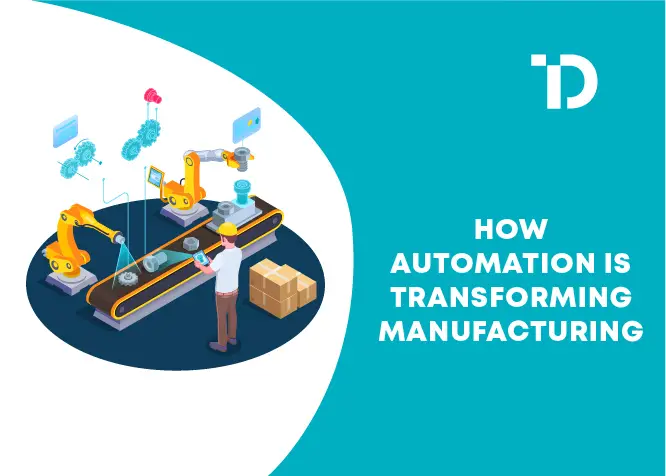Gaining Knowledge on Industrial Automation
Industrial automation streamlines manufacturing processes by substituting manual operations with technology-driven solutions. It encompasses a range of technologies used to control and monitor production, from simple mechanical devices to complex software systems. This sophisticated synergy drives the heart of modern manufacturing, enhancing productivity, quality, and consistency in ways previously unattainable.
The history of industrial automation is rich, with its roots in the early mechanical innovations of the industrial revolution. Today, automation has advanced to incorporate robotics, computer-aided design (CAD), and other technological marvels that have dramatically altered the manufacturing sector. These systems offer unparalleled precision and can operate continuously without succumbing to fatigue or error, factors that fundamentally transform the production capacity of factories worldwide.
The Impact of Automation on Manufacturing Efficiency
The efficiency gains attributed to industrial automation are indisputable. Automated systems are designed for nonstop production, offering an incredibly reliable means of maintaining workflow momentum. These systems enhance the overall throughput by minimizing the human error element, maximizing consistency, and significantly uplifting quality control standards.
Several studies have illustrated the transformative power of automation on the factory floor. Companies that integrate automation into their manufacturing processes often report higher output levels and reductions in production costs due to the more efficient use of materials and labor. Furthermore, these companies can respond to market demands with greater agility, adjusting production rates and processes with pinpoint accuracy.
Technological Innovations Driving Industrial Automation
Over recent years, technological innovations have rapidly accelerated the scope and capabilities of industrial automation. Robotics has entered a new era, characterized by machines capable of performing complicated tasks with speed and proficiency that rival human capability. In conjunction with this, artificial intelligence and machine learning algorithms allow these machines to ‘learn’ and improve over time, further refining the production process.
The advancement of sensor technology, too, has had a significant impact. Sensors now facilitate real-time monitoring and adjustments within automated systems, enhancing safety and efficiency. These intelligent sensors can detect and communicate a range of variables—from equipment performance to environmental conditions—ensuring that automated processes run at peak performance at all times.
Balancing the Human Element with Automation
Despite the increasing prevalence of automation, there remains an essential need for human oversight and expertise. As roles evolve within the manufacturing industry, a new set of skills oriented toward maintaining and managing automated systems becomes crucial. A workforce knowledgeable in data analysis, system programming, and robotics will be necessary to harness the full potential of automated technologies.
Transitioning into this new industry paradigm requires a concerted effort across multiple fronts. Employers must invest in proper training and development programs for their employees. At the same time, educational institutions must update their curricula to include relevant technological competencies that prepare students for the future workforce. Emphasizing lifelong learning and adaptability will ensure the workforce can evolve alongside technological advancements.
The Economic Implications of Industrial Automation
One of the most compelling reasons for adopting industrial automation is its economic benefit. The initial expense of implementing automated solutions is counterbalanced by significant gains: reduced labor costs, decreased downtime in production, and minimized errors and waste. This translates into a strong return on investment since businesses can manufacture better items for less money, which eventually helps their bottom line.
As noted by Forbes, businesses utilizing automation technologies can remain competitive in a rapidly changing global market. These companies are improving their internal processes and enhancing their ability to meet customer needs with greater customization and responsiveness.
Sustainability and Environmental Benefits of Automation
The intersection of industrial automation and sustainability is yielding positive results. Automated systems significantly reduce waste and lower energy consumption by facilitating more efficient resource use and optimizing production processes. This directly benefits the environment, as less waste and lower energy requirements mean a smaller carbon footprint for manufacturing operations.
Furthermore, the precision enabled by automation often means that products are built to higher standards and thus have a longer lifespan, reducing the need for frequent replacement and further conserving resources. The transition to more environmentally friendly manufacturing methods is essential to achieving larger ecological objectives since it will match industry expansion with the worldwide need to solve environmental issues.
Global Adoption of Industrial Automation
Though the benefits of industrial automation are universal, its adoption rates vary widely globally. High-income countries have been at the forefront, leveraging automation to sustain and further their economic development. This has allowed them to stay competitive and continue as leaders in manufacturing innovation.
In contrast, developing nations are often slower to adopt such technologies due to various constraints, including financial limitations and lack of infrastructure. Nonetheless, as technology becomes more accessible, we are seeing a gradual increase in the uptake of automation solutions in these regions, promising a more evenly distributed technological revolution in manufacturing worldwide.
Preparing for a Hyper-Automated Future
Strategic action is necessary today to prepare for a deeply interconnected, hyper-automated future. Policymakers should facilitate the integration of advanced automation technologies with regulatory frameworks that promote innovation while protecting the workforce. Similarly, educators play a critical role in equipping the next generation with the necessary skills to thrive in an automated landscape.
This is a transformative time for manufacturing—a shift from the hands of workers to the circuits of machines. It’s essential to navigate this transition with a clear vision that maximizes the benefits of automation while minimizing potential disruptions. By focusing on inclusive policies, sustained investment in technology and education, and cross-sector collaboration, we can ensure that the future of manufacturing is bright, efficient, and sustainable for all.
Related Articles:
How Factory Owners Can Optimize Efficiency
The Future of Contract Management: Integrating AI and Contract Intelligence
